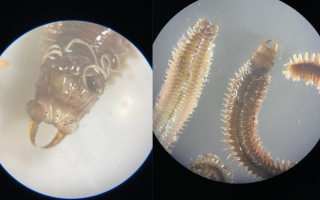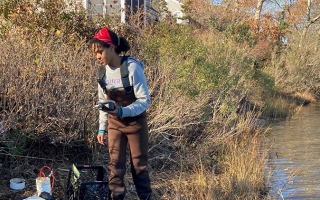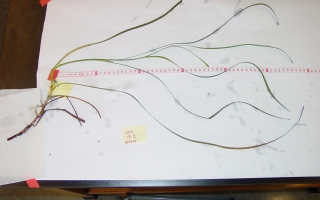Full Name
Ketil Koop-Jakobsen
Title
Assistant Scientist
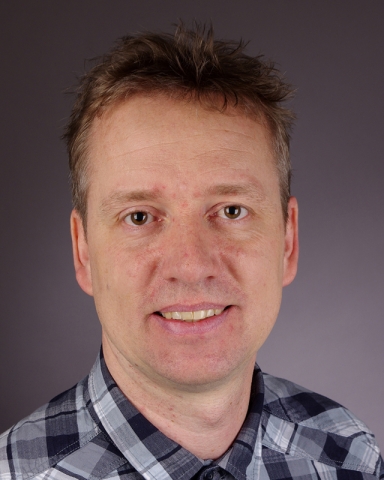
- Email:
- Phone:
- Fax:
- CV:
File
- ORCID ID:
0000-0002-1540-6594
Master's, Chemistry and Environmental Biology, Roskilde University, Denmark, 2003
My research focus on the spatial and temporal dynamics of chemical gradients in soils and sediments, and their importance for ecosystem functions and services.
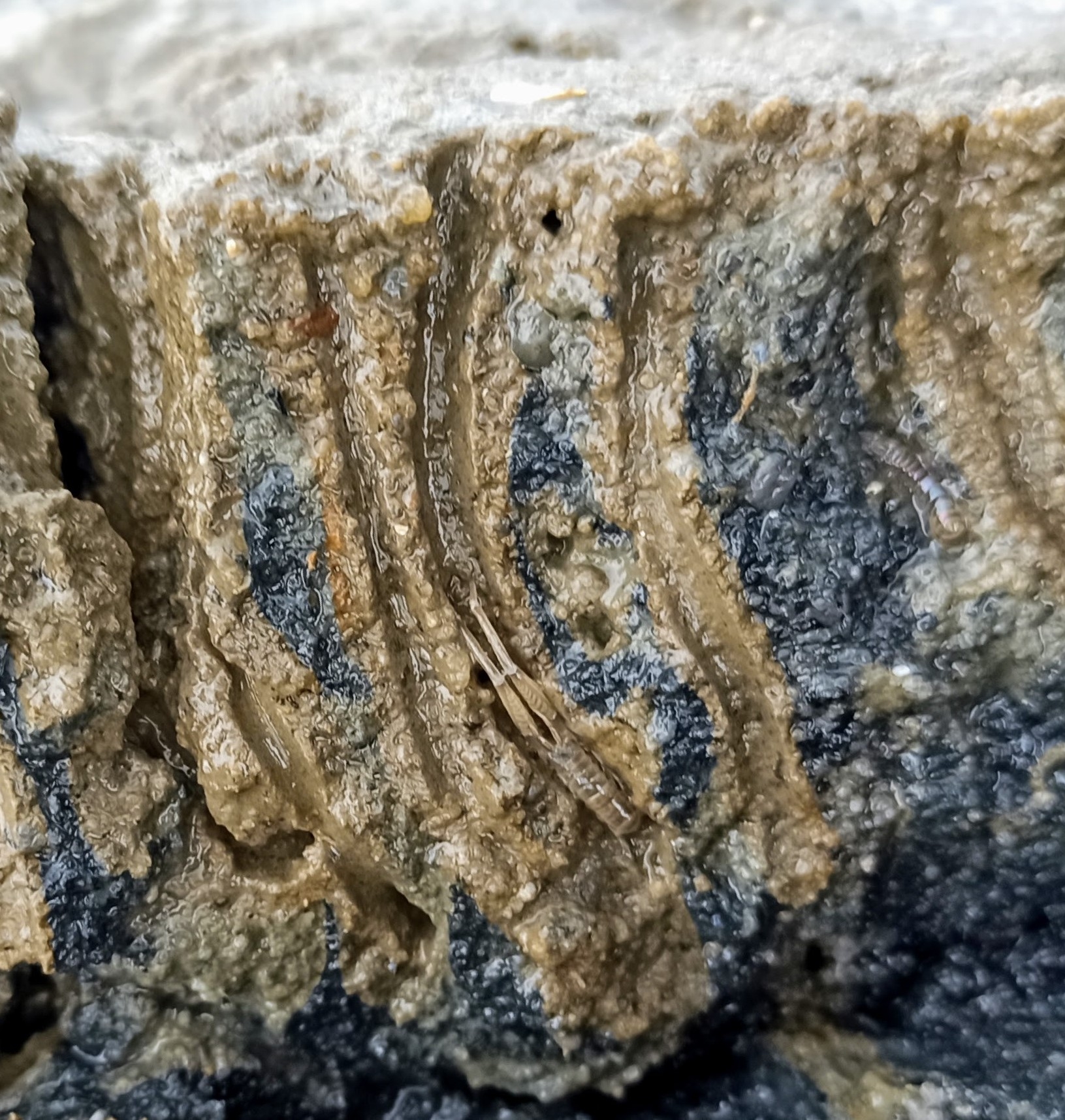
In aquatic ecosystems, many important biogeochemical processes occur below the sediment surface and are controlled by complex interactions between plants, animals, sediment and microbes. These processes are important for the control of essential ecosystem services and functions, such as carbon sequestration, nutrient retention, and greenhouse gas production. Plant traits, such as plant-mediated sediment oxygenation and root exudation, and infauna activities, such as bioturbation and bioirrigation, generate chemical gradients that continuously change in time and space. Inside the sediment, specialized microbial communities often evolve around these gradients, which are found, for example, around roots and burrows. This generates a patchy distribution in abundance, functionality and activity of the microbial community in the sediment, which vary over time in response to diurnal, tidal and seasonal changes. The importance of the spatiotemporal variation for nutrient turnover, carbon storage and GHG emissions may not be captured using conventional analytical methods, and spatiotemporal variation of microbial and chemical processes are often overlooked in aquatic sediments. My research focus on plant and animal traits that alter sediment chemistry and microbial communities in time and space, and aim to elucidate the impact it has on major ecosystem functions such as nutrient turnover, carbon storage and GHG emissions.
My research specifically targets the small-scale chemical gradients in sediments that build up as a result of the interaction between plants, animals, sediment and microbes. For this purpose, I apply a variety of analytical tools for imaging, profiling and monitoring the accumulation and turnover of essential elements and molecules. The toolbox includes planar- and needle-optode systems for capturing the distribution of O2, pH and CO2, microelectrodes for profiling of O2, N2O, H2S and redox gradients and soil-zymography for determining the spatial orientation of the microbial activity in the sediment. These techniques enable the analysis of rapidly changing small-scale (<mm) gradients in the sediment chemistry.
Granse, D., Titschack, J., Ainouche, M., Jensen, K., & Koop-Jakobsen, K. (2022). Subsurface aeration of tidal wetland soils: Root-system structure and aerenchyma connectivity in Spartina (Poaceae). Science of The Total Environment, 802, 149771. doi: 10.1016/j.scitotenv.2021.149771
Koop-Jakobsen, K., Meier, R. J., & Mueller, P. (2021). Plant-Mediated Rhizosphere Oxygenation in the Native Invasive Salt Marsh Grass Elymus athericus. Frontiers in Plant Science, 12. doi:10.3389/fpls.2021.669751
Keshta, A., Koop-Jakobsen, K., Titschack, J., Mueller, P., Jensen, K., Baldwin, A., & Nolte, S. (2020). Ungrazed salt marsh has well connected soil pores and less dense sediment compared with grazed salt marsh: a CT scanning study. Estuarine, Coastal and Shelf Science, 245, 106987. doi:10.1016/j.ecss.2020.106987
Koop-Jakobsen, K., & Gutrod, M. (2019). Shallow salt marsh tidal ponds–an environment with extreme oxygen dynamics. Frontiers in Environmental Science. doi: 10.3389/fenvs.2019.00137
Koop-Jakobsen, K., Mueller, P., Meier, R. J., Liebsch, G., & Jensen, K. (2018). Plant-Sediment Interactions in Salt Marshes – An Optode Imaging Study of O2, pH, and CO2 Gradients in the Rhizosphere. Frontiers in Plant Science, 9(541). doi:10.3389/fpls.2018.00541
Lenzewski, N., Mueller, P., Meier, R. J., Liebsch, G., Jensen, K., & Koop-Jakobsen, K. (2018). Dynamics of oxygen and carbon dioxide in rhizospheres of Lobelia dortmanna – a planar optode study of belowground gas exchange between plants and sediment. New Phytologist, 218(1), 131-141. doi:10.1111/nph.14973
Koop-Jakobsen, K., Fischer, J., & Wenzhöfer, F. (2017). Survey of sediment oxygenation in rhizospheres of the saltmarsh grass - Spartina anglica. Science of The Total Environment, 589, 191-199. doi:10.1016/j.scitotenv.2017.02.147
Koop-Jakobsen, K., & Giblin, A. E. (2010). The effect of increased nitrate loading on nitrate reduction via denitrification and DNRA in salt marsh sediments. Limnology and Oceanography, 55(2), 789-802. doi: 10.4319/lo.2010.55.2.0789
Koop-Jakobsen, K., & Giblin, A. E. (2009). Anammox in Tidal Marsh Sediments: The Role of Salinity, Nitrogen Loading, and Marsh Vegetation. Estuaries and Coasts, 32(2), 238-245. doi:10.1007/s12237-008-9131-y
